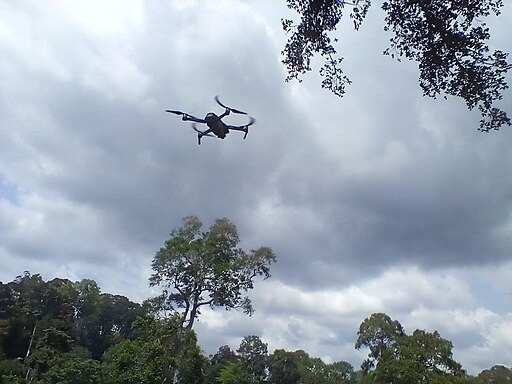The first drone superhighway in the world is set to become a reality this summer. It will open in the UK between June and early July.

(Photo: Wikimedia Commons/ Ibnali1)
Project Skyway
Drone software provider Altitude Angel developed the Skyway network, a 165-mile (265 kilometers) airspace to connect Coventry in the Midlands to Milton Keynes in the Southeast. It will allow pilotless uncrewed aerial vehicles to make high-speed deliveries across the UK.
Once completed, the Skyway network will consist of 30 ARROW towers, which will control drones from the ground. Together, they will form a virtual highway, enabling UAVs to travel safely without a human pilot. A total of 15 drone towers have been built so far.
A person needs to see a drone and be within 1,640 feet (500 meters) to fly it. With the Skyway network, each tower on the ground serves as a 'human spotter,' enabling UAVs to be flown far beyond the sight of any human pilot. Since each tower provides a range of 2.5 miles (4 kilometers), UAVs are 'passed' up the chain of the superhighway so they can fly long distances. The towers are also equipped with robust sensors which build a virtual map of everything within the airspace.
As of the moment, Altitude Angel is waiting on approval from the Civil Aviation Authority (CAA) to begin flying UAVs within the network. The company maintains that the Skyway network will boost businesses and save lives by allowing medicine deliveries.
READ ALSO: Drones Approved to Make US Home Deliveries
Safety and Security Concerns
Despite this breakthrough, skeptics have warned that the drone superhighway could threaten the privacy and safety of British people living in its flight path. Critics of the Skyway network are particularly concerned about privacy, noise, and crashes.
Although the drone industry celebrates this achievement, Chris Cole, director of the campaign group Drone Wars, says it may end up being super annoying and super intrusive for people living under the UAVs.
Altitude Angel insists that most superhighway users will fly fixed-wing drones that are almost silent. The developer also claims that at a height of 400 feet (122 meters), anyone on the ground will hardly see and hear drones overhead. It is also estimated that no more than ten drones will use the airspace per day when the superhighway initially opens.
However, Cole is also concerned that flying UAVs beyond the visual line of sight can pose a unique safety risk. He argues that the bedrock of aviation safety is having a human pilot who will look out of the cockpit window and take avoidance measures if necessary. Altitude Angel insists that the CAA's approval is contingent on the system being better than a human spotter.
Skeptics are concerned that opening up a superhighway will enable commercially and privately owned UAVs to pass over private property. Meanwhile, the developer plays down any potential privacy implications of the Skyway network. It argues that most superhighway drones will not be equipped with cameras or other sensors since they rely entirely on ground towers for navigation.
According to Sophie O'Sullivan, Head of Future Safety and Innovation at the CAA, developing proposals such as those from Altitude Angel and bringing them to market has many stages. They continue to work with the company and various operators to ensure the technologies are safe and secure.
RELATED ARTICLE: World's Fastest Drone Captures 1/4 The Speed Of Sound, Cocked At 163 mph- Faster Than A Sports Car
Check out more news and information on Drone in Science Times.














